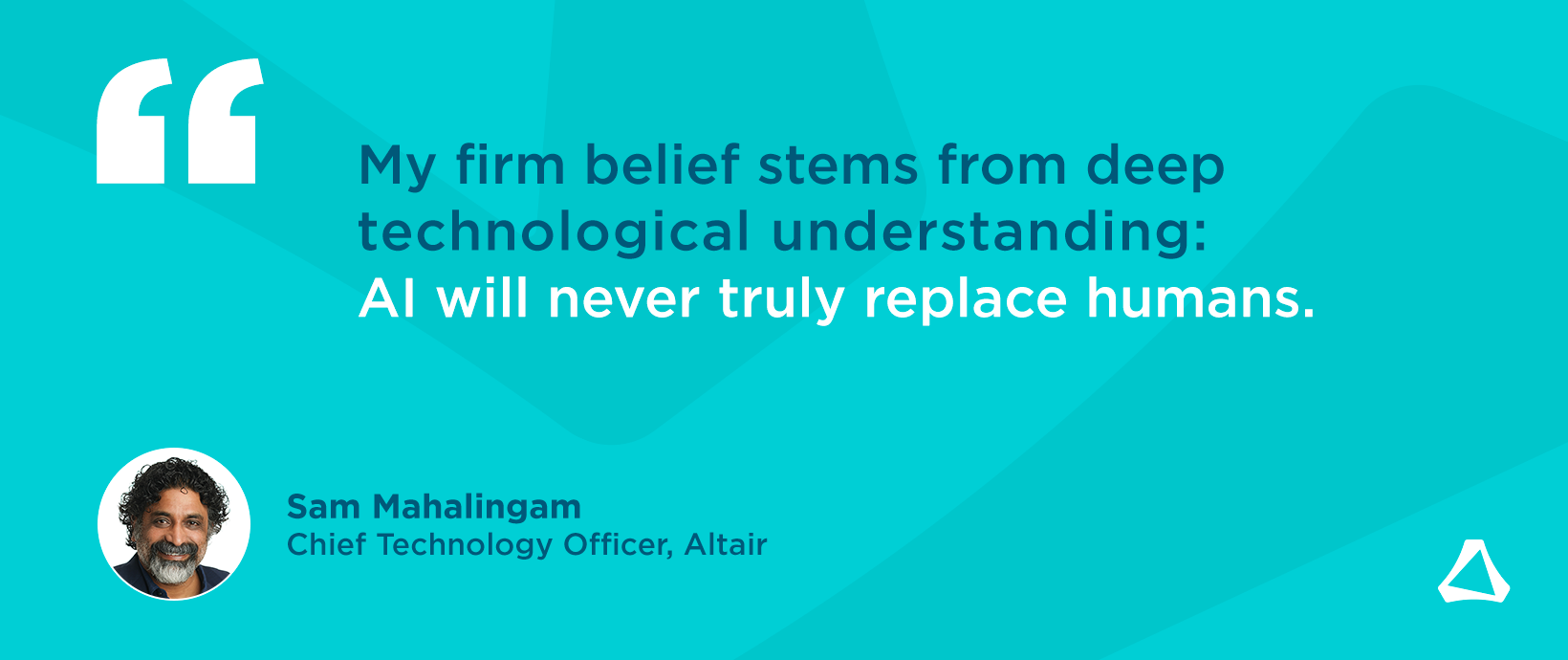Design Like the Future Depends on it

Innovation is alive and well and shaking up the status quo as evidenced by the myriad customers who presented at our annual global Altair Technology Conference (ATC). This year’s event hosted more than 700 attendees, 17 technology and partner sponsors, and 70 speakers. Globally to date, we’ve hosted more than 10,000 attendees. Reflecting on inspiring talks and customers I have known for decades and those I met for the first time at the event, the one thing I walked away with is the sheer diversity among industries using our technology was staggering - even to me. The applications of Altair solutions are helping our customers forge ahead in areas like advanced mobility and autonomous driving, emissions and waste reduction, human enhancement through robotics, improving healthcare and orthosis, even creating a more powerful and accurate golf club that makes the same sound as its name.
One of the major themes that rippled through the event was the use of machine learning (ML) and artificial intelligence (AI). ML and AI are picking up traction fast in all levels of engineering. I was pleasantly surprised to learn such a large number of our manufacturing customers are already adopting and successfully applying ML with Altair Knowledge Works. They are seeing incredible results by their ability to make better and faster decisions. For example, Ford packed the room with their presentation about using ML to make better stamping process decisions, to improve manufacturing efficiency and increase part quality. Maxion Wheels shared that their trials using ML could lead to scrap reduction in the range of 50%, which is amazing when you consider they produce 60 million wheels annually.
The future of mobility, in its many forms, was another theme – from cars and planes to trains and bikes. Working with Altair and ExOne, Nissan had a standing-room only crowd for their concept (generative design) to mass produce 3D-printed LiDAR mounting brackets required for autonomous vehicles.
For those who see the future of mobility without wheels, Hyperloop Transportation Technologies had the audience engaged around the future system of tubes that will transport people and goods in pressurized capsules on a frictionless magnetic cushion at speeds exceeding 750 mph. Capsules are powered by a linear induction motor, an electromagnetic propulsion and embedded rechargeable batteries. As a result, the system is silent and emissions-free.
Terrafugia presented on a future in the sky where you will be able to catch a ride in flying cars, but they prefer the term “roadable aircraft.” For those who prefer two wheels, Wahoo demonstrated a stationary training bike that ‘blurred the line between virtual and reality.’ They were able to accomplish their design through control system development and motor design using Altair HyperWorks. Whether you prefer cars or planes, trains or bikes – rest assured, new transportation methods will be moving us to where we work, live and play.
I was energized by the palpable interest around Altair SimSolid – a revolutionary technology that runs fast and accurate analysis on complex CAD assemblies (as with our philosophy of an open environment, it’s CAD agnostic), radically increasing productivity. One customer said it was ‘staggeringly fast, both in terms of set up and processing.” Other companies who presented on SimSolid use – Faraone, Multimatic and Case New Holland – all had similar stories; the ability to produce blazing fast and accurate results, which none of them believed until they tested it themselves, is enabling them to confidently simulate multiple design iterations earlier and quicker than ever before.
By the end of the conference, it was evident that our attendees are tirelessly working to solve very tough, complex problems that will have global impact. For example, data scientists are using our Altair PBS Works HPC solutions and Knowledge Works ML capabilities to predict catastrophic weather with the objective of getting people out of harm’s way and keeping resources nearby, when the clean-up begins. Others are leveraging Altair solutions to design for a more sustainable planet – reducing waste and emissions, developing safer cars, creating healthier lifestyles. They are designing like the future depends on it.




